International design competition organized by Korea Institute of Architects sought creative ideas to establish the new-generation public library in Incheon, South Korea, as an intellectual and cultural symbol of progressing towards the status of an international city for the citizens of Songdo business district. The participants were asked to present their sophisticated designs that would make the SONGDO International City Library a unique destination as well as a highly functional public facility.
Hundreds of architects from all over the world took part in the competition. The jury awarded the first prize to the Criss-Cross Library designed by Sun Architects & Engineers (Korea) and Pentatonic LLC (USA). We have collected several amazing projects that we think are also worth mentioning.
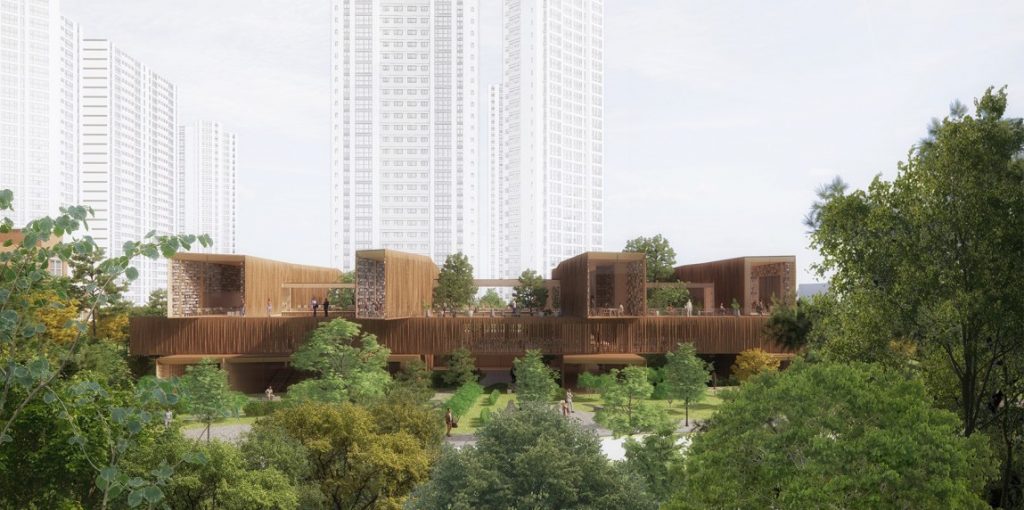

Proposal by Bollingen
The proposal by the Brooklyn-based architecture studio Bollingen envisions the library as an artificial ‘brain’ that helps people to discover the hidden treasures in their mind. Inspired by the form and function of the human brain, the concept aims to not only guide visitors to find knowledge by apps and devices, but also to physically and subconsciously communicate with them through various architectural languages.
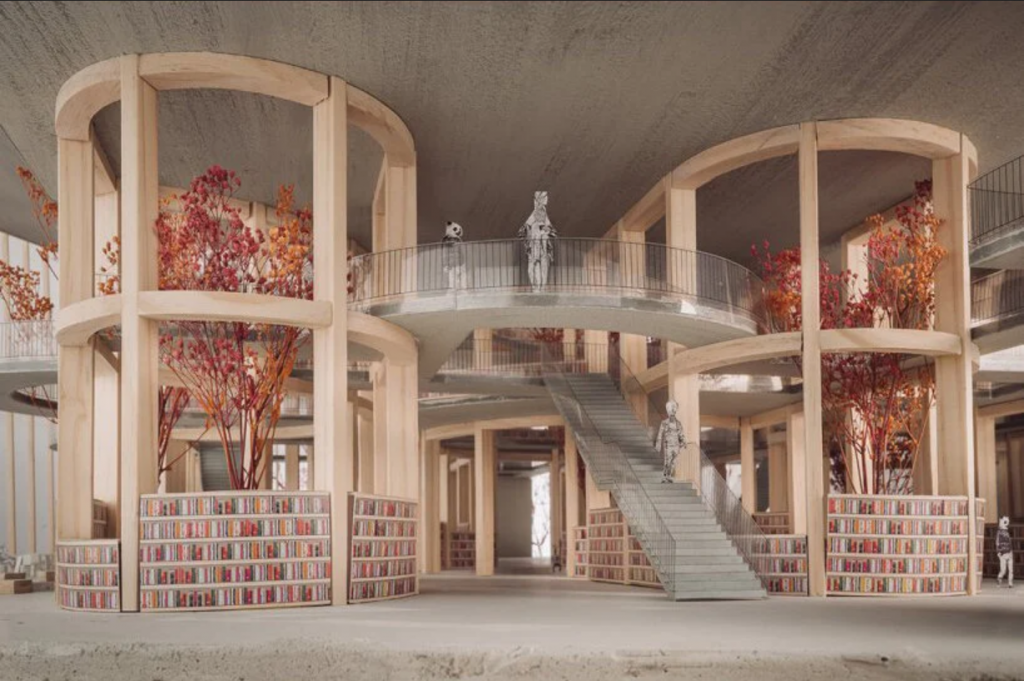
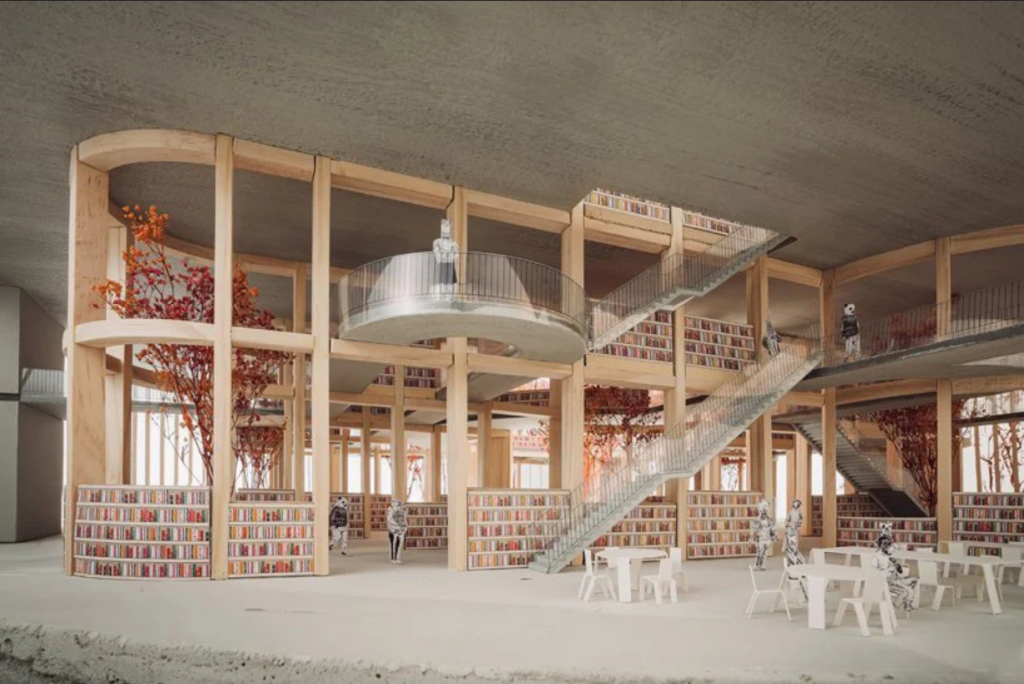
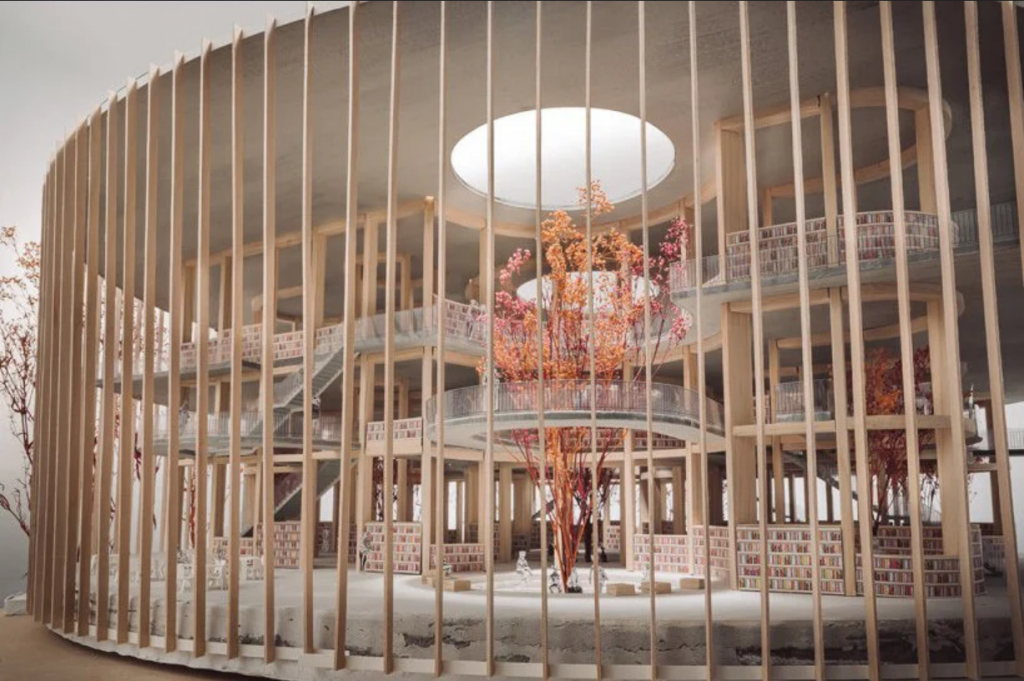
Proposal by Bollingen
As a metaphor of the cortex of the brain, described by the studio as a “complex place to attain knowledge,” the design encompasses an elaborate arrangement of walls, not unlike a labyrinth, where people can lose their way in order to start a new adventure with the help of the library’s AI. Informed by the brain’s network of neurons, a network of sensors and communication devices connect various data to a central AI, which monitors and communicates with people to create a truly intelligent building that optimizes the public’s experience of the new Songdo library.
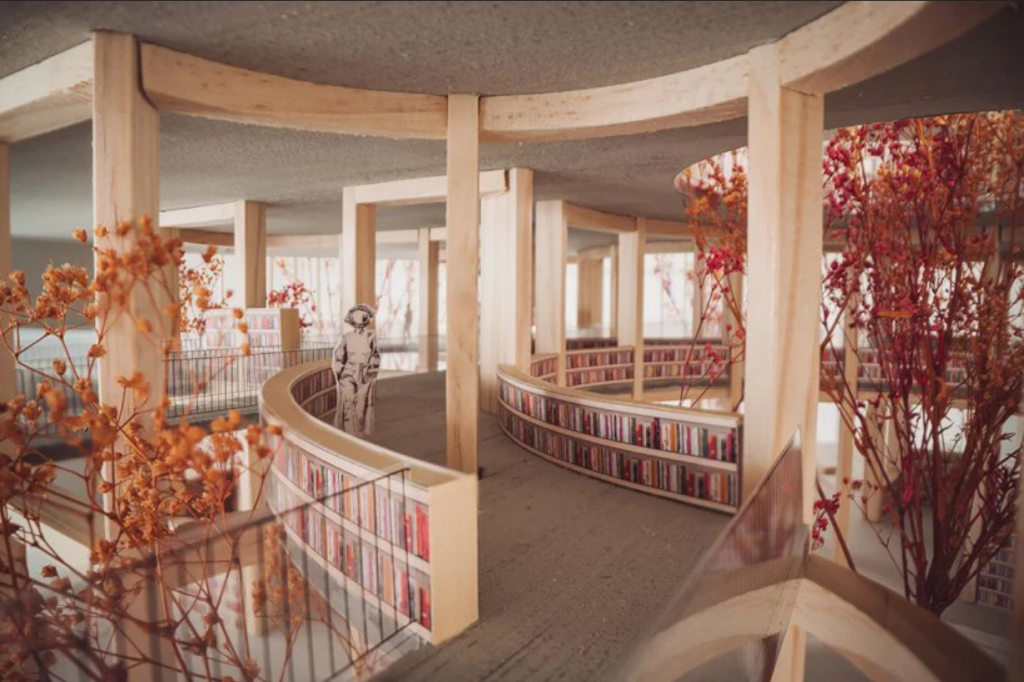

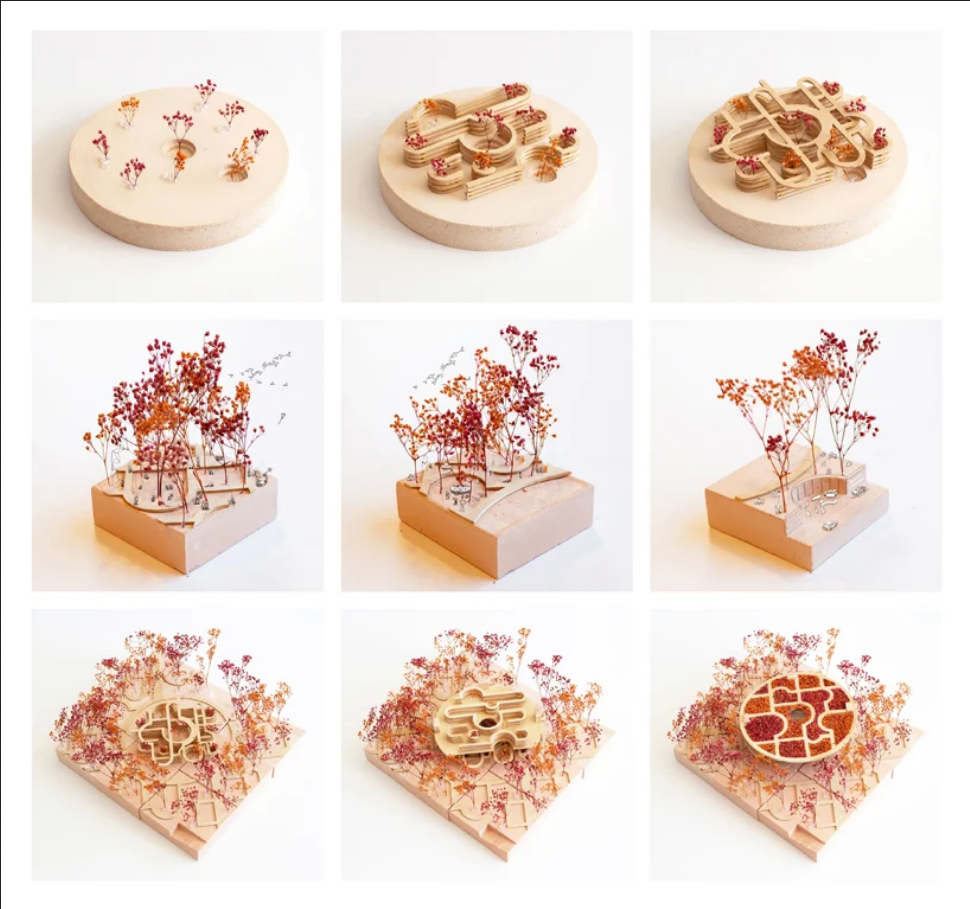
Proposal by Bollingen
In this concept, books do not exist separately from the building, but rather become the construction material that is stacked and merged into a kind of a living architecture forming the “booktonic” walls (a term coined by the team as a combination of ‘book’ and ‘tectonic’). Trees, an ages-old symbol of ancient wisdom and spiritual power, are used in the proposal as connective points throughout the architecture.
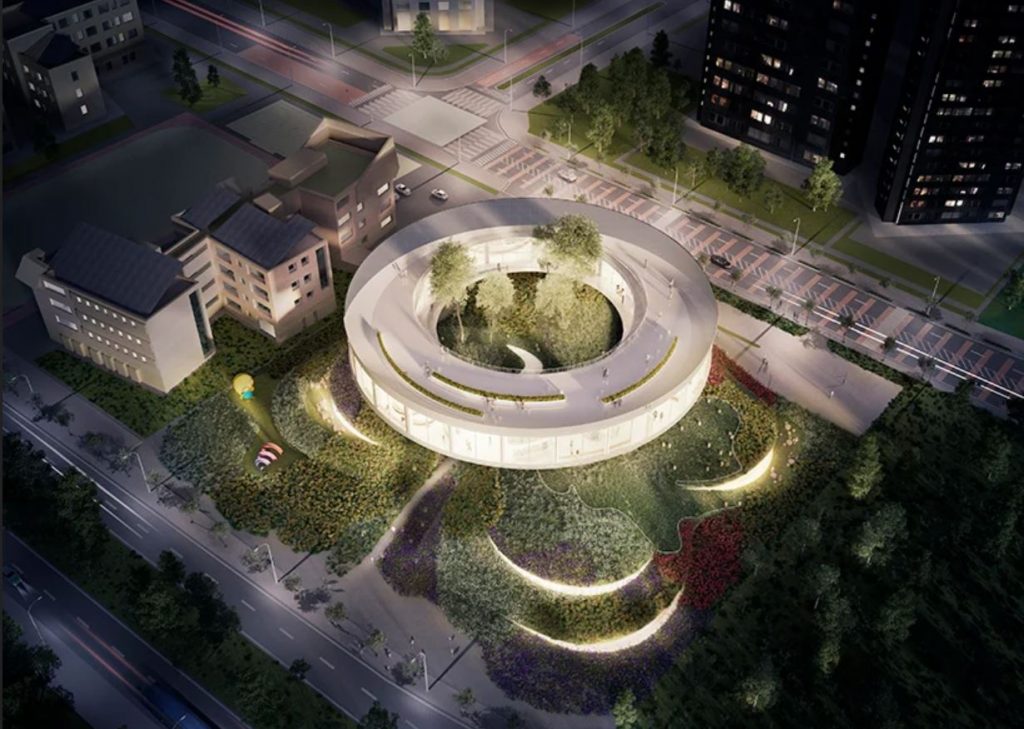
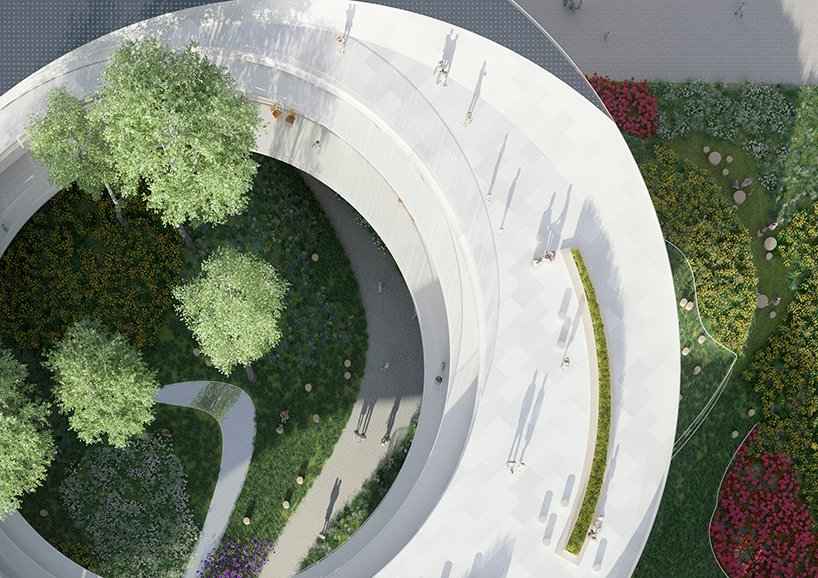
Proposal by H-O-TT
The proposal by EU-based studio H-O-TT follows the idea that it was from Nature where humans first obtained knowledge, centuries before they developed the ability to perceive and record important information. The design therefore translates two different natural landscapes — hills and clouds — into a huge, ring-like volume perched atop an undulating mound.
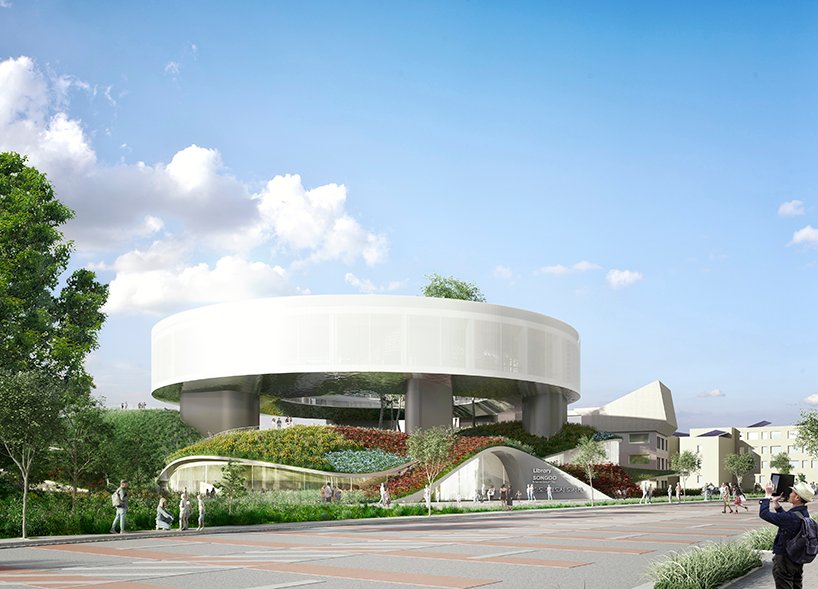
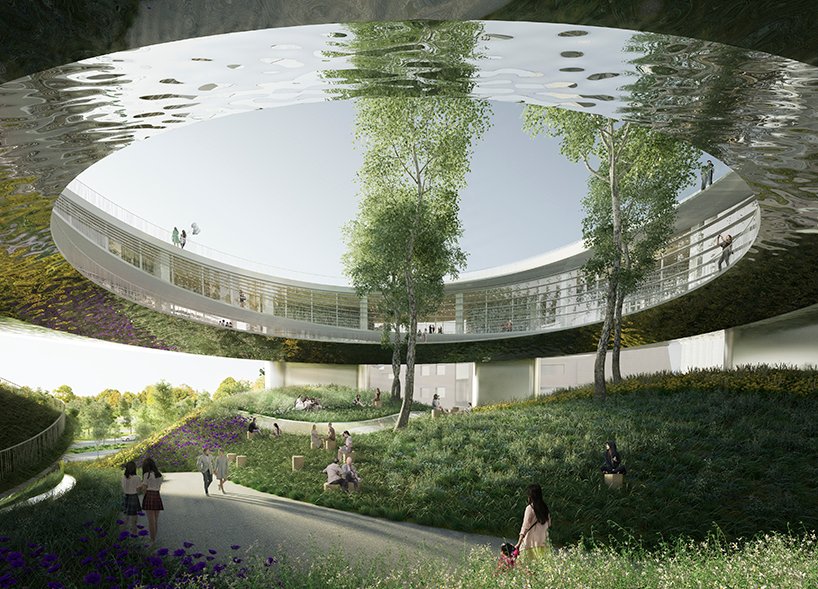
Proposal by H-O-TT
While the public and experiential topography of “the Hills”, with its looping pathways, accommodates auditoria an event spaces and allows free public movement around the site, “the Cloud” is a legible volume perched atop, literally elevating the more intensive activities of the library – reading, teaching, and independent work.

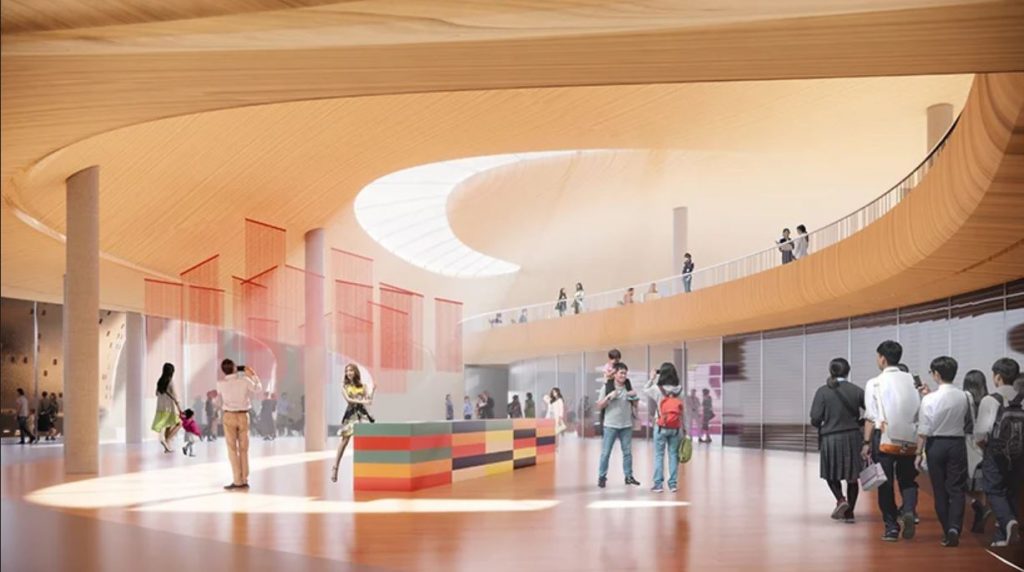
Proposal by H-O-TT
The architects have designed various possibilities for interaction between “the Hills” and “the Cloud” via a diverse array of gathering points and thresholds. The two landscapes represent a combination of two different models of the library: while “the Cloud” stands for a traditional library as a repository of knowledge, “the Hills” speaks for a contemporary idea of libraries as social spaces where knowledge is generated through discourse.
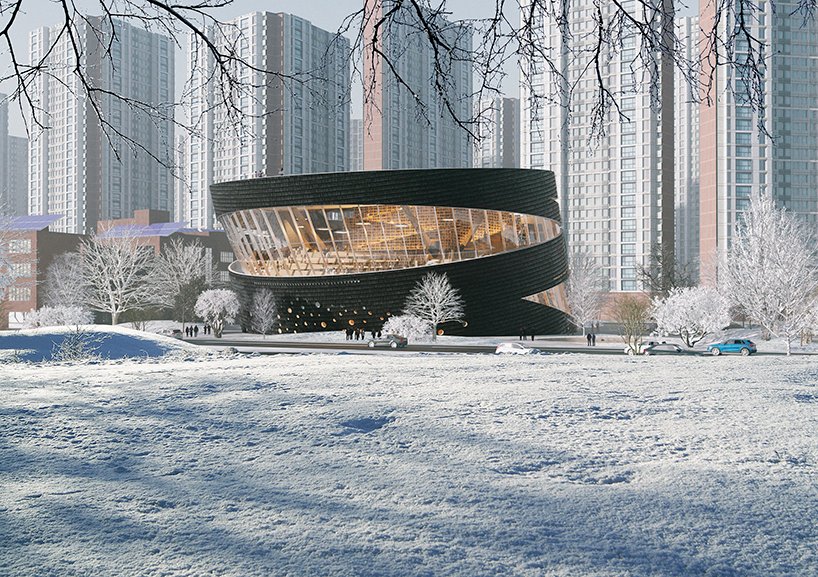
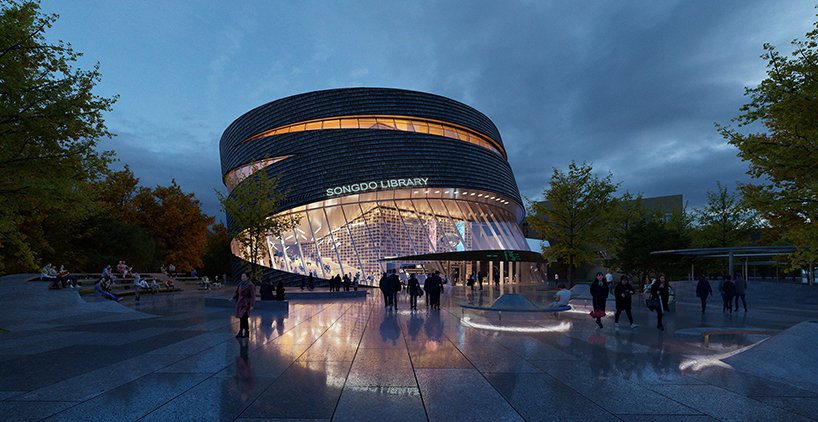
Proposal by AOE Architects
The entry by Beijing-based AOE architects starts from understanding that the library will not be seen as solely a landmark, but as an important cultural hub that brings people together, connecting local citizens with tourists. The resulting design imagines a rounded leaning building that attracts visitors with its distinctive shape.
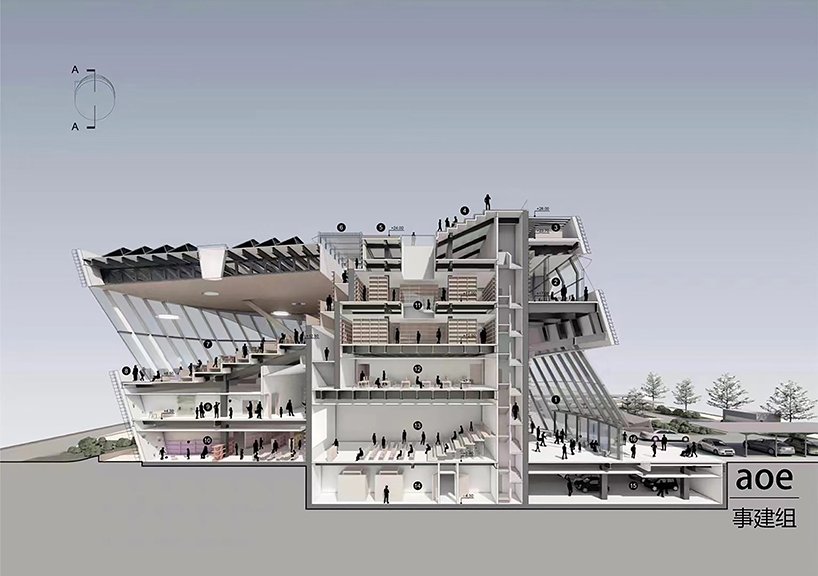

Proposal by AOE Architects
The architects has chosen a rounded shape as the one that responds best to the surrounding context, providing access from different directions. It also helps maximize the open space where citizens can gather. The team has also accurately calculated the angle of 18.5°, in which the building leans towards the south, as the perfect solution to avoid direct sunlight, reduce heat gain in summer, and keep thermal energy in winter, creating a comfortable and energy-saving environment. Further sustainable design strategies help the building achieve natural ventilation, low energy consumption, and maximum recycled energy.

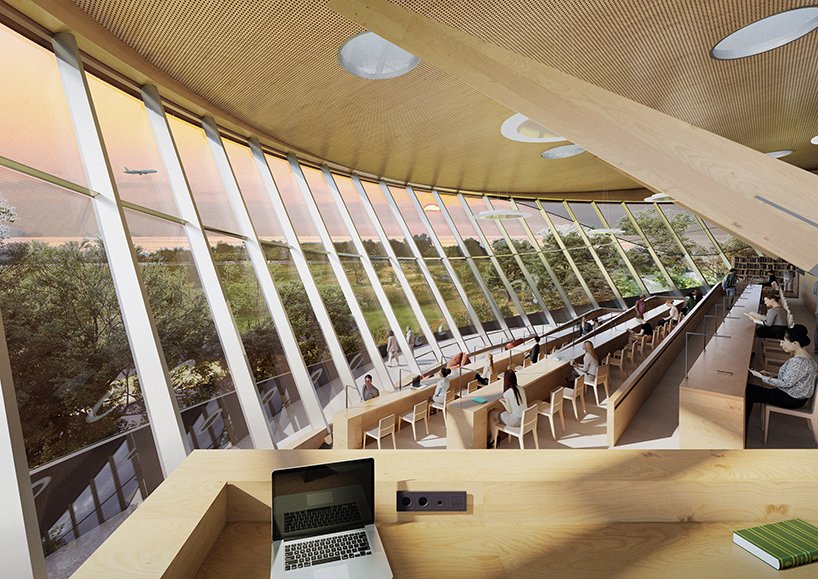
Proposal by AOE Architects
A concrete core wall with a cantilever-truss system is used for the structure of the building. The reading hall uses only four diagonal columns for bracing, so that the visitors can enjoy a generous, extensive space for their reading. The reading hall is divided into several zones to encourage different learning activities for both individual and group users.

Proposal by AOE Architects
Enabling the library to serve as a local venue for numerous events, meetings and exhibitions at the same time, the design includes a community living hall, which connects to the outdoor public space, as well as an auditorium and a series of community classrooms, which can be accessed by the public even if the main library area is closed.
Header image: 1st place by Sun Architects & Engineers and Pentatonic LLC.
All images courtesy of Korea Institute of Architects